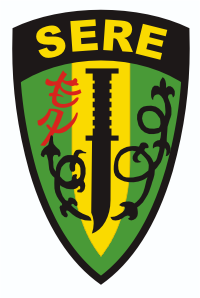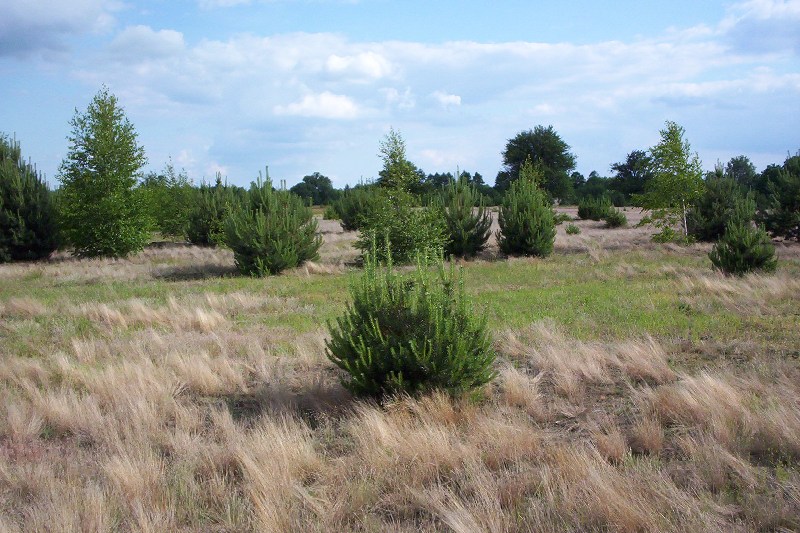|
Sere
Sere or SERE may refer to: Military * Survive, Evade, Resist, Extract, a British military training program * Survival, Evasion, Resistance and Escape, an American military training program People * Sere (name) * Sere people, an ethnic group in Southern Sudan Places * Serè, Liege, Belgium * Sère, Gers department, France * Sere, Mali, a rural commune in the Tombouctou region of Mali Other uses * Ṣērê, a Hebrew niqqud vowel sign * " Seré", a song by Chilean musician Nicole Natalino * Sere (ecology), an ecological stage or event, one such event in a series * Sere languages, a proposed family of Ubangian languages ** Sere language, spoken in northeastern Democratic Republic of the Congo * "SERE", an episode of ''The Unit'' (season 1) See also * * Sear (other) * Seer (other) * Seir (other) * Serr Serr is a surname. Notable people with this surname include: * Jan Serr (born 1943), American visual artist * Jeff Serr (born 1955), American radio pe ... [...More Info...] [...Related Items...] OR: [Wikipedia] [Google] [Baidu] |
Survival, Evasion, Resistance And Escape
Survival, Evasion, Resistance, and Escape (SERE) is a training program, best known by its military acronym, that prepares U.S. military personnel, U.S. Department of Defense civilians, and private military contractors to survive and "return with honor" in survival scenarios. The curriculum includes survival skills, evading capture, application of the military code of conduct, and techniques for escape from captivity. Formally established by the U.S. Air Force at the end of World War II and the start of the Cold War, it was extended to the Navy and United States Marine Corps and consolidated within the Air Force during the Korean War with greater focus on "resistance training." During the Vietnam War (1959–1975), there was clear need for "Jungle" survival training and greater public focus on American POWs. As a result, the U.S. military expanded SERE programs and training sites. In the late 1980s, the U.S. Army became more involved with SERE as Special Forces and "Spec ... [...More Info...] [...Related Items...] OR: [Wikipedia] [Google] [Baidu] |
Sere (ecology)
A seral community is an intermediate stage found in ecological succession in an ecosystem advancing towards its climax community. In many cases more than one seral stage evolves until climax conditions are attained. A prisere is a collection of seres making up the development of an area from non-vegetated surfaces to a climax community. A seral community is the name given to each group of plants within the succession. A primary succession describes those plant communities that occupy a site that has not previously been vegetated. These can also be described as the pioneer community. Computer modeling is sometimes used to evaluate likely succession stages in a seral community. Depending on the substratum and climate, a seral community can be one of the following: ; Hydrosere: Community in water ; Lithosere: Community on rock ; Psammosere: Community on sand ; Xerosere: Community in dry area ; Halosere: Community in saline body (e.g. a marsh) Examples Seral communities in secon ... [...More Info...] [...Related Items...] OR: [Wikipedia] [Google] [Baidu] |
Survive, Evade, Resist, Extract
The Defence Survive, Evade, Resist, Extract (SERE) Training Organisation (DSTO), is a military training organisation based at RAF St Mawgan, Cornwall, in the United Kingdom. It is tri-service and trains personnel in survival techniques, evading capture and resistance from interrogation. History Background The Royal Navy and the Royal Air Force have what has been described as a "rich history of survival training". Crews were often lost at sea during the Second World War, with an attrition rate of 80%, which prompted this training to be initiated. Prior to the DSTO being established, the Royal Navy and RAF provided their own survival training and the Resistance Training Wing provided the services with conduct after capture training. Royal Navy Before 1943, Royal Navy survival training and equipment was the responsibility of two ratings trained by the RAF. The significance of the work however resulted in a reorganisation whereby the navy would train its own Survival Equip ... [...More Info...] [...Related Items...] OR: [Wikipedia] [Google] [Baidu] |
Sere People
The Sere are an ethnic group numbering over 10,000 living in the South Sudanese state of Western Bahr el Ghazal. Their old home was a place called Ndedegumbva or Ndedekumbva, said to be recorded on the maps of old explorers. Their original country lies between the rivers Boku and Kere, though some of them were settled on the left of the river Boku. In local tradition, the Zande king Ikpiro sent some of his people to conquer the Sere, but they were utterly defeated, their leaders being caught, burnt to death, and torn to pieces. Ikpiro later came himself, destroying their land, killing numbers of old people, and enslaved the women and the young. The Sere combatants moved northward, but they were soon surrounded by the Azande troops. The Sere then took to their stony hills and hid in the caves. The Azande heaped up straw and wood all around them, and so the "flower" of the Sere were either burned alive or impaled when trying to flee. Most of the Sere remained in their old country und ... [...More Info...] [...Related Items...] OR: [Wikipedia] [Google] [Baidu] |
Serè
Seraing (; wa, Serè) is a city and municipality of Wallonia located in the province of Liège, Belgium. The municipality consists of the following districts: Boncelles, Jemeppe-sur-Meuse, Ougrée, and Seraing. With Liège, Herstal, Saint-Nicolas, Ans, and Flémalle, it forms the greater Liège agglomeration (600,000 inhabitants). To the south of Seraing are the Condroz and the Ardennes regions. In addition to its steel factories, Seraing is home to the crystal manufacture Val Saint Lambert, which has been operating on the site of an old Cistercian abbey since 1826. The site of the Arcelor steel company, previously known as Cockerill-Sambre, is the former summer residence for the Prince-Bishopric of Liège. History Antiquity and Middle Ages Several skeletons, potshards, weapons, and jewels were discovered here, dating from the 5th and 6th century, attesting to Seraing being inhabited in Frankish times. The first mention of ''Saran'' dates from 956, when a Carolin ... [...More Info...] [...Related Items...] OR: [Wikipedia] [Google] [Baidu] |
Ṣērê
Tzere (also spelled ''Tsere'', ''Tzeirei'', ''Zere'', ''Zeire'', ''Ṣērê''; modern he, צֵירֵי, , sometimes also written ; formerly ''ṣērê'') is a Hebrew niqqud vowel sign represented by two horizontally-aligned dots "◌ֵ" underneath a letter. In modern Hebrew, tzere is pronounced the same as segol and indicates the phoneme /e/, which is the same as the "e" sound in the vowel segol and is transliterated as an "e". There was a distinction in Tiberian Hebrew between segol and Tzere. Usage Tzere is usually written in these cases: * In final stressed closed syllables: מַחְשֵׁב (, ''computer''), סִפֵּר (, ''he told''; without niqqud סיפר). Also in final syllables closed by guttural letters with an added furtive patach: מַטְבֵּעַ (, ''coin''), שוֹכֵחַ (, ''forgetting''). Notable exceptions to this rule are: ** The personal suffixes ־תֶם (, 2 pl. m.), ־תֶן (, 2 pl. f.), ־כֶם (, 2 pl. m.), ־כֶן (, 2 pl. f.), ־הֶם ... [...More Info...] [...Related Items...] OR: [Wikipedia] [Google] [Baidu] |
Sere Languages
The Sere languages (also called the ''Ndogoic'' or ''Sere-Ndogo'' languages) are a proposed family of Ubangian languages spoken in South Sudan and the Democratic Republic of the Congo. Several are endangered or extinct. The most populous Sere language is Ndogo of South Sudan, with about 30,000 speakers. Traditionally classified as part of the Sere languages, Feroge–Mangayat and Indri– Togoyo could be separate groups that may not belong within Sere. Languages Per ''Ethnologue'' 16, the structure of the family is as follows: * Feroge–Mangaya: Feroge, Mangayat * Indri–Togoyo (extinct): Indri, Togoyo * Sere–Bviri ** Bai–Viri: Bai, Belanda Viri ** Ndogo–Sere: Ndogo, Sere, Tagbu Although the Sere–Bviri languages are clearly related to each other, it is not clear if they are related to Feroge–Mangayat The Mangayat (also, Bugwa and Bukwa) are an ethnic group living in the South Sudanese state of Western Bahr el Ghazal. They speak Mangayat, a Niger– ... [...More Info...] [...Related Items...] OR: [Wikipedia] [Google] [Baidu] |
Sere Language
Sere is a minor Ubangian language of the northeastern Democratic Republic of the Congo The Democratic Republic of the Congo (french: République démocratique du Congo (RDC), colloquially "La RDC" ), informally Congo-Kinshasa, DR Congo, the DRC, the DROC, or the Congo, and formerly and also colloquially Zaire, is a country in .... The name is variously spelled ''Serre, Shaire, Shere, Sheri, Sili, Siri,'' French ''Chere'' or prefixed as ''Basili, Basiri''. References Languages of the Democratic Republic of the Congo Sere languages {{Ubangian-lang-stub ... [...More Info...] [...Related Items...] OR: [Wikipedia] [Google] [Baidu] |
Sere (name)
{{given name, type=both ...
Sere is a name which is used as a surname and a given name. People with the name include: Surname *Amadou Séré (born 1987), Burkinabé football player *Boubacar Séré (born 1984), Burkinabé athlete * Emile La Sére (1802–1882), American politician *Émilienne de Sère, French singer *Kaisa Sere (1954–2012), Finnish computer scientist Given name *Sere Matsumura (born 2003), Japanese football player Other uses * Sere (rapper) (born 1976), stage name of Finnish rapper Matti Huhta *Octave Séré, pseudonym of the French music critic Jean Poueigh Jean Marie Octave Géraud Poueigh (24 February 1876 in Toulouse – 14 October 1958 in Olivet) was a French composer, musicologist, music critic, and folklorist. He wrote music criticism under the pseudonym Octave Séré. Poueigh is known for suin ... [...More Info...] [...Related Items...] OR: [Wikipedia] [Google] [Baidu] |
Sère
Sère (; oc, Cèra) is a commune in the Gers department in southwestern France. Geography Population See also * Communes of the Gers department The following is a list of the 461 Communes of France, communes of the Gers Departments of France, department of France. The communes cooperate in the following Communes of France#Intercommunality, intercommunalities (as of 2020): References Communes of Gers {{Gers-geo-stub ...[...More Info...] [...Related Items...] OR: [Wikipedia] [Google] [Baidu] |



